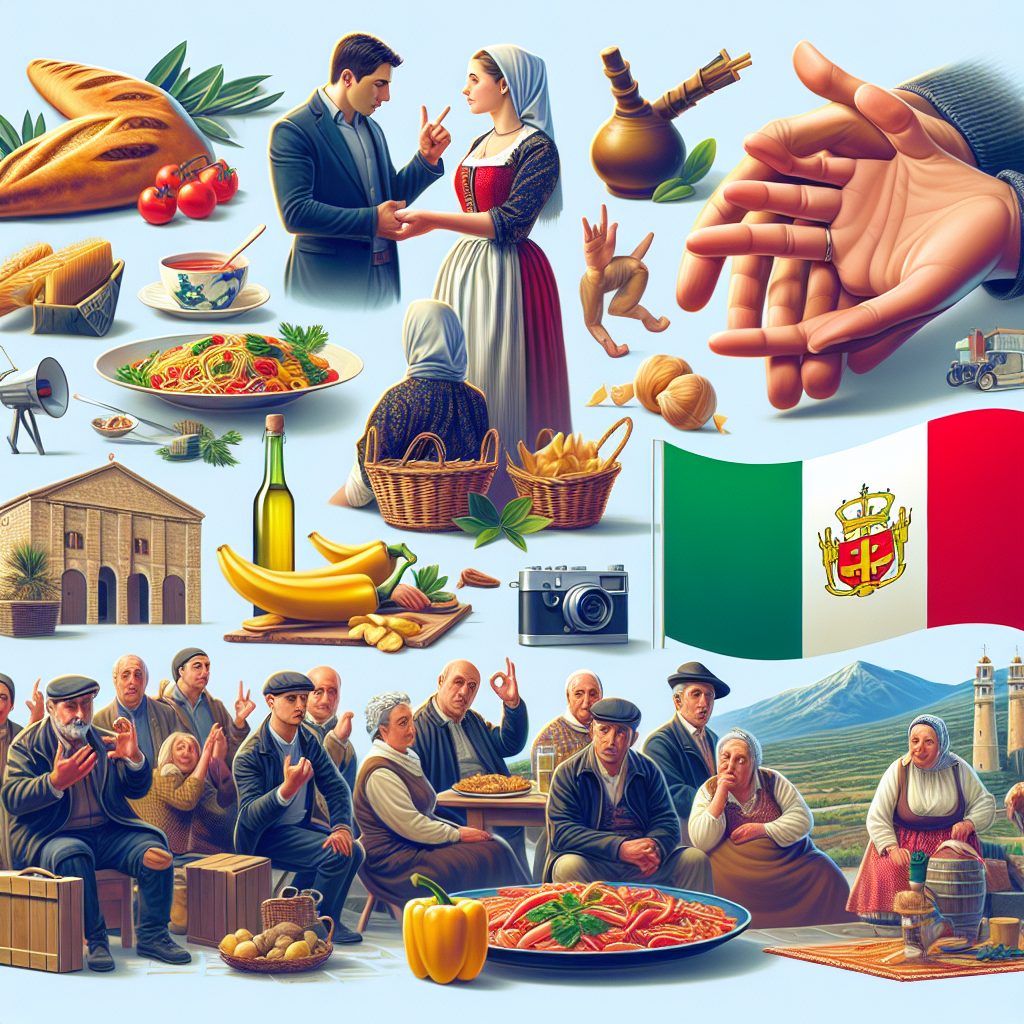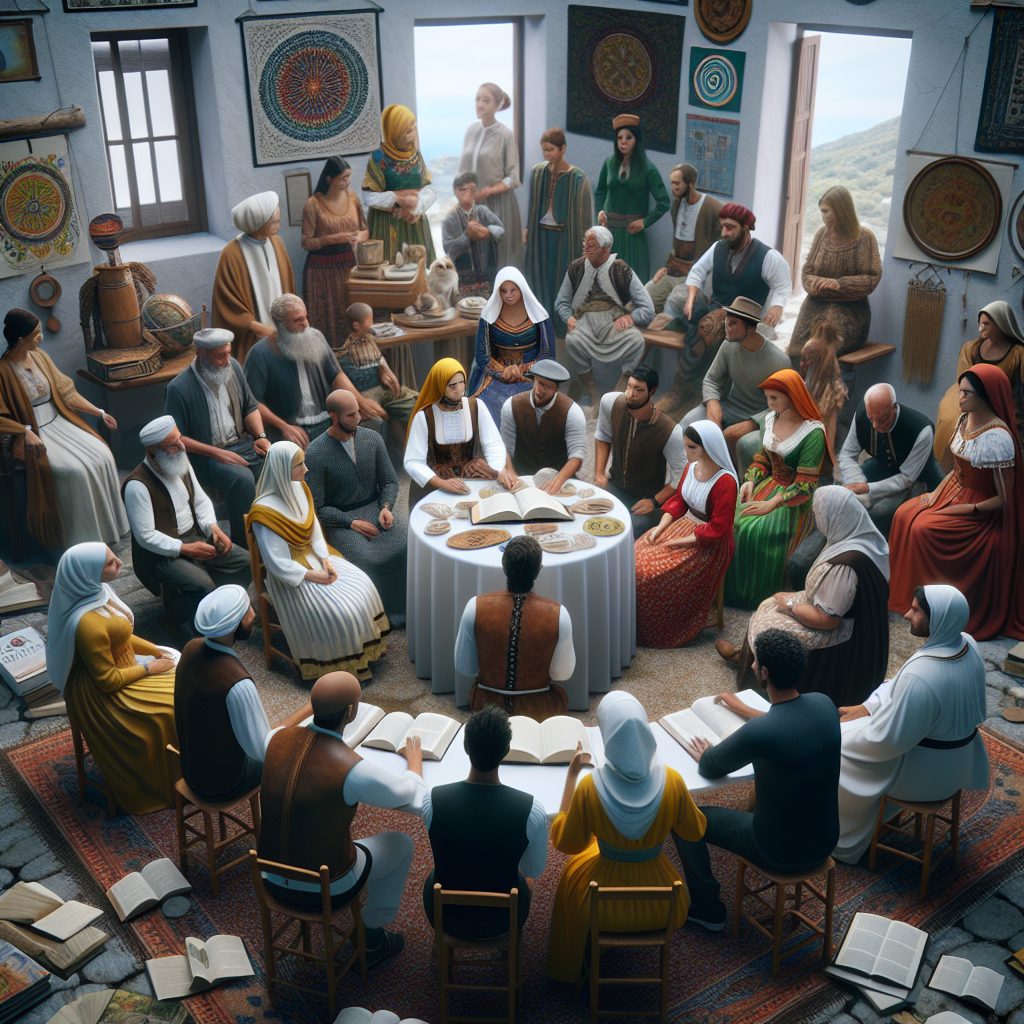The Sardinian language, also known as Sardu, is a Romance language spoken in the island of Sardinia, Italy. With a distinct linguistic heritage, it sets itself apart from the other languages in the country. Sardinian has managed to survive and thrive in daily life, contributing its unique flavors to the island’s culture. Its impacts are vast and encompass various aspects of Sardinian society, from education and media to literature and folklore.
In Sardinia, the Sardinian language is not just spoken, but celebrated and cherished. It holds a special place in the hearts of its speakers, acting as a symbol of their distinct cultural identity. The language plays a significant role in education, with several schools offering bilingual programs that prioritize the learning of both Sardinian and Italian. This commitment to language preservation ensures that future generations have the opportunity to immerse themselves in the rich linguistic heritage of their ancestors.
Moving forward, this article will explore the key takeaways related to the Sardinian language in daily life. We will delve into its impacts on education, media, literature, and folklore, shedding light on the unique features that make Sardinian an essential part of the tapestry that is Sardinian culture. Join us as we explore the beauty and importance of this vibrant language in everyday life on the enchanting island of Sardinia.
Key Takeaways
1. Sardinian language remains vital in daily life, with over 1 million speakers in Sardinia, Italy.
2. Recognizing Sardinian as an official language would help preserve its cultural heritage and foster linguistic diversity.
3. Younger generations are losing fluency in Sardinian due to various factors, such as increased exposure to Italian and societal pressure.
4. Efforts are underway to promote the use of Sardinian in education, media, and government, aiming to reverse the decline and ensure its survival.
5. The revitalization of Sardinian requires support from both Sardinian speakers and policymakers to bring about long-term sustainability.
What are the various aspects of the Sardinian language in daily life?
1. Importance of Sardinian Language
The Sardinian language holds significant importance in the daily lives of the people on the island of Sardinia. It is recognized as one of the Romance languages and is predominantly spoken by the locals alongside Italian. Sardinian is not only a means of communication but also a marker of cultural identity, serving as a reflection of the island’s rich history and heritage.
2. Sardinian Language and Education
In the realm of education, efforts are being made to promote the Sardinian language within schools. Bilingual education programs have been introduced to ensure that Sardinian-speaking students have the opportunity to develop proficiency in both Italian and Sardinian. This integration of Sardinian language in education assists in preserving the language for future generations.
3. Sardinian Language in Media and Literature
The Sardinian language has a presence in various forms of media. From newspapers and magazines to radio and television programs, a range of media outlets utilize Sardinian to cater to the local audience. Furthermore, there is also a budding Sardinian literature scene, with numerous authors penning their works in the native language, thereby contributing to its preservation and promoting its usage.
4. Sardinian Language in Everyday Conversations
Within the daily lives of Sardinians, the Sardinian language is often used in casual conversations among friends, family, and in community gatherings. It serves as a tool for connection, fostering a sense of belonging and unity among the locals. Sardinian phrases and expressions commonly find their way into greetings, small talk, and traditional ceremonies.
5. Sardinian Language Challenges
Despite its cultural significance, the Sardinian language faces certain challenges. In recent years, there has been a declining number of Sardinian-speaking individuals, mostly due to societal and economic factors. The influence of the Italian language and the globalization of communication have also contributed to the diminishing prominence of Sardinian. Nevertheless, efforts are being made to safeguard and revitalize the language.
Guides for Incorporating Sardinian Language in Daily Life:
- How can you start learning the Sardinian language?
- Tips for practicing Sardinian in everyday conversations.
- How to find Sardinian language resources and literature?
- Understanding the cultural context behind Sardinian expressions and idioms.
- Ways to support and contribute to the preservation of the Sardinian language.
FAQs
1. Is Sardinian language widely spoken in daily life in Sardinia?
Yes, Sardinian language is still spoken and used in many aspects of daily life in Sardinia. It has managed to maintain its presence in everyday conversations, especially in rural areas and among older generations.
2. Are there any official documents or governmental support for Sardinian language?
Yes, Sardinian language has gained recognition and protection from the local government in Sardinia. It is included in the regional statutes and there are efforts to promote its usage and preservation through cultural institutions.
3. Is Sardinian language taught in schools in Sardinia?
Yes, Sardinian language is taught in some schools as an optional subject in Sardinia. However, the extent and availability of Sardinian language education may vary depending on the region and individual schools.
4. Can tourists communicate easily in Sardinian language?
While knowledge of Sardinian language among tourists may be limited, most locals in touristic areas are fluent in Italian and English. It is still recommended to learn a few basic phrases in Sardinian language as a sign of respect and to enhance the cultural experience.
5. How different is Sardinian language from Italian language?
Sardinian language is a distinct Romance language that differs significantly from Italian. It has its own vocabulary, grammar, and pronunciation. However, due to Italian influence and proximity, there are also similarities and loanwords between the two languages.
6. Are there any efforts to revitalize Sardinian language?
Yes, there are ongoing efforts to revitalize Sardinian language through various initiatives. These include language courses, cultural events, media production, and the establishment of language revitalization organizations. The goal is to preserve and promote the rich linguistic heritage of Sardinia.
7. Can speaking Sardinian language benefit career opportunities in Sardinia?
While speaking Sardinian language may not be a requirement for most career opportunities in Sardinia, having knowledge of the language can be advantageous in certain sectors such as tourism, cultural heritage, and academia. It can enhance communication with locals and provide a deeper understanding of the Sardinian culture.
8. How influential is Sardinian language in shaping Sardinian identity?
Sardinian language plays a significant role in shaping Sardinian identity. It is considered a fundamental component of Sardinian culture, heritage, and collective memory. The preservation and usage of the language contribute to the preservation and expression of unique Sardinian identity.
9. Can non-native speakers learn Sardinian language?
Yes, non-native speakers can learn Sardinian language. While it may pose some challenges due to its distinctiveness and limited learning resources, there are language courses, textbooks, and online resources available for those interested in studying and mastering the language.
10. Are there any similarities between Sardinian language and other Romance languages?
Yes, Sardinian language shares similarities with other Romance languages, especially with Catalan. These similarities can be observed in vocabulary, grammar, and phonetics. However, it is important to note that Sardinian has its own unique features and variations.
Final Thoughts
In conclusion, the Sardinian language continues to be an important part of daily life in Sardinia, despite the influence of Italian and other languages. It holds cultural significance and contributes to the distinct identity of the island. The efforts to preserve and revitalize Sardinian language are crucial in safeguarding this linguistic heritage for future generations.
While Sardinian language may not be widely spoken by younger generations or used in official contexts, its presence in everyday conversations, local media, and cultural events showcases its resilience and enduring connection to Sardinian traditions. Learning and appreciating Sardinian language can deepen one’s understanding of Sardinia’s rich history, culture, and people, enhancing the overall experience of exploring this extraordinary island.






